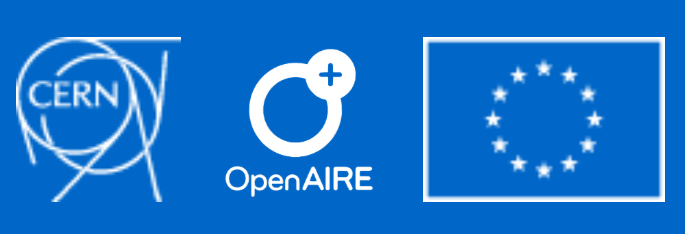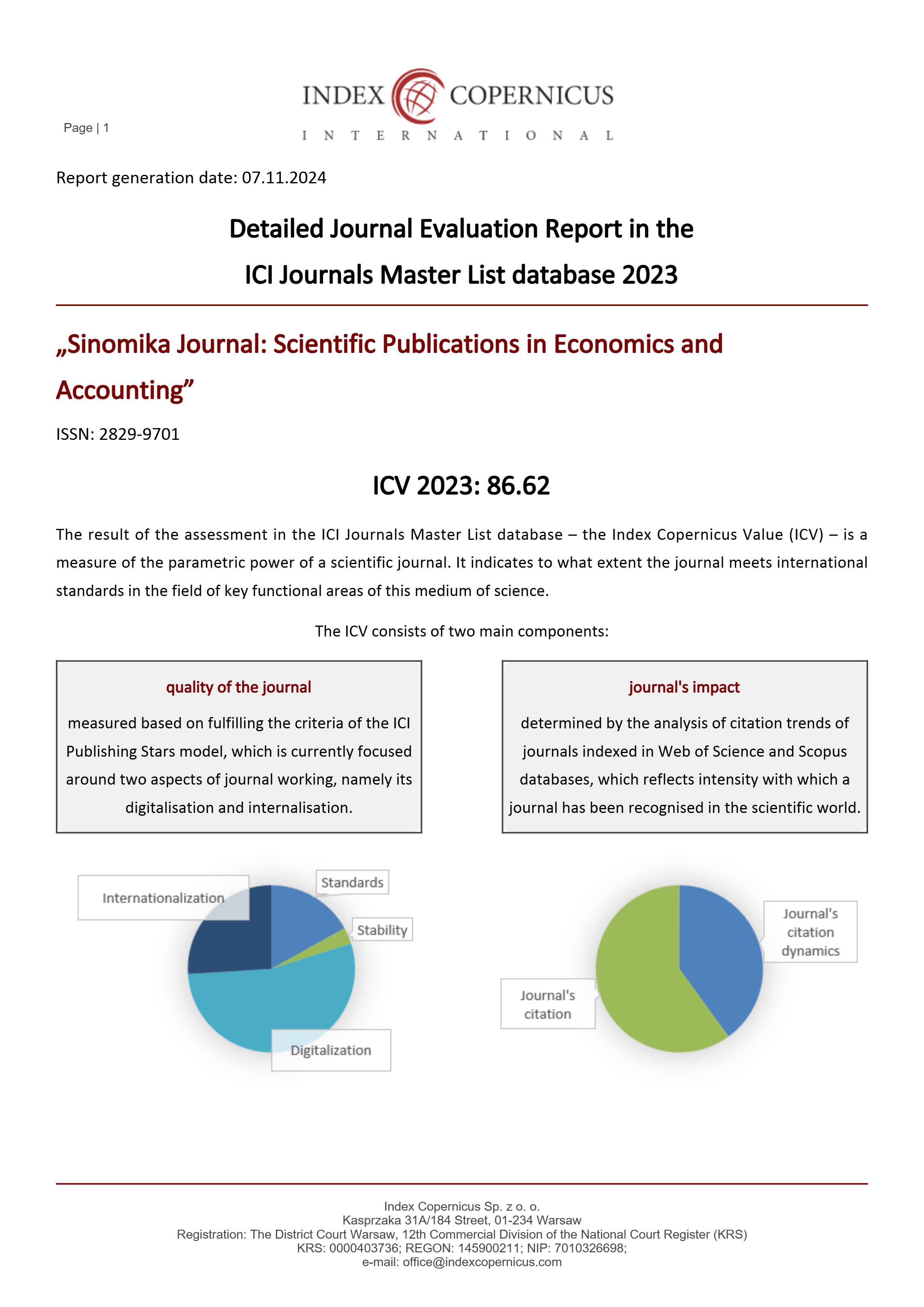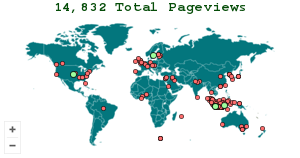Pengaruh Brand Image, Corporate Social Responsibility dan Electronic Word of Mouth (E-Wom) Terhadap Customer Loyalty Charles & Keith Mall Senayan City
DOI:
https://doi.org/10.54443/sinomika.v1i6.900Keywords:
Brand Image, Corporate Social Responsibility, Electronic Word of Mouth (E-WOM), Customer LoyaltyAbstract
This research aims to examine the effect of Brand Image, Corporate Social Responsibility and Electronic Word of Mouth (E-WOM) on the Customer Loyalty of Charles & Keith Mall Senayan City. Brand Image, Corporate Social Responsibily and Electronic Word Of Mouth (E-WOM) as exogenous variables, then Customer Loyalty as endogenous variables. This research was conducted on the customer Charles & Keith Mall Senayan City. This is the reason behind this research to meet the increasingly fierce competition and the need for better distribution methods to reduce costs and increase profits in marketing. The samples in this study were taken using the Purposive Sampling method with a sample of 146 respondents. The analysis method used is the Structural Equation Model (SEM) and uses Partial Least Square (PLS) to test the strength of direct and indirect relationships between various variables. The results of this study prove that Brand Image affects Customer Loyalty, Corporate Social Responsibilty affects Brand Image, Corporate Social Responsibility affects Electronic Word of Mouth (E-WOM) and Electronic Word of Mouth (E-WOM) affects Customer Loyalty.
Downloads
References
Afriani, R., Indradewa, R., & Syah, T. Y. R. (2019). Brand Communications Effect , Brand Images , and Brand Trust Over Loyalty Brand Building at PT Sanko Material Indonesia. Journal of Multidisciplinary Academic, 3(3), 44–50.
Ahmad, N., Scholz, M., Ullah, Z., Arshad, M. Z., Sabir, R. I., & Khan, W. A. (2021). The nexus of csr and co-creation: A roadmap towards customer loyalty. Sustainability (Switzerland), 13(2), 1–15. https://doi.org/10.3390/su13020523
Al-Abdallah, G. M., & Ahmed, R. S. (2018). The impact of corporate social responsibility on customer loyalty in the Qatari telecommunication sector. Journal of Business & Retail Management Research, 13(01). https://doi.org/10.24052/jbrmr/v13is01/art-25
Ali, W., Danni, Y., Latif, B., Kouser, R., & Baqader, S. (2021). Corporate social responsibility and customer loyalty in food chains—mediating role of customer satisfaction and corporate reputation. Sustainability (Switzerland), 13(16), 10–12. https://doi.org/10.3390/su13168681
Bu, Y., Parkinson, J., & Thaichon, P. (2020). Digital content marketing as a catalyst for e-WOM in food tourism. Australasian Marketing Journal, 29(2), 142–154. https://doi.org/10.1016/j.ausmj.2020.01.001
Chakraborty, U., & Bhat, S. (2018). The Effects of Credible Online Reviews on Brand Equity Dimensions and Its Consequence on Customer Behavior. Journal of Promotion Management, 0(0), 1–26. https://doi.org/10.1080/10496491.2017.1346541
Chen, Z., & Yuan, M. (2020). Psychology of word of mouth marketing. Current Opinion in Psychology, 31, 7–10. https://doi.org/10.1016/j.copsyc.2019.06.026
Chivhungwa, T. (2019). The influence of green image , physcial environment quality and green trust on green purchase intention. 2010.
Dagger, T. S., David, M. E., & Ng, S. (2021). Do relationship benefits and maintenance drive commitment and loyalty? Journal of Services Marketing, 25(4), 273–281. https://doi.org/10.1108/08876041111143104
Dawar, N., & Pillutla, M. M. (2020). Impact of product-harm crises on brand equity: The moderating role of customer expectations. Journal of Marketing Research, 37(2), 215–226. https://doi.org/10.1509/jmkr.37.2.215.18729
de Matos, C. A., & Rossi, C. A. V. (2008). Word-of-mouth communications in marketing: A meta-analytic review of the antecedents and moderators. Journal of the Academy of Marketing Science, 36(4), 578–596. https://doi.org/10.1007/s11747-008-0121-1
Eisingerich, A. B., Rubera, G., Seifert, M., & Bhardwaj, G. (2019). Doing good and doing better despite negative information?: The role of corporate social responsibility in customer resistance to negative information. Journal of Service Research, 14(1), 60–75. https://doi.org/10.1177/1094670510389164
Esra, D. D. (2018). An Overview on Traditional and Electronic Word of Mouth Communication (WOM). Lectio Socialis, 2(1), 16–26.
Fernández-Guadaño, J., & Sarria-Pedroza, J. H. (2018). Impact of Corporate Social Responsibility on value creation from a stakeholder perspective. Sustainability (Switzerland), 10(6). https://doi.org/10.3390/su10062062
Gouldner, A, W. (1960). The norm of reciprocity: A Preliminary Statement. American Sociological Review, 25(2), 161–178.
Haryono, A., & Elistia. (2020). Analisis Pengaruhcitra Merek ( Brand Image ). 1.
Hulu, P., & Ruswanti, E. (2021). INFLUENCE OF PRODUCT QUALITY, PROMOTION, BRAND IMAGE, CUSTOMER TRUST TOWARDS PURCHASE INTENTION (STUDY CASE ON POCARI SWEAT ISOTONIC DRINK IN INDONESIA). 1–13.
Hur, W. M., Kim, H., & Kim, H. K. (2018). Does customer engagement in corporate social responsibility initiatives lead to customer citizenship behaviour? The mediating roles of customer-company identification and affective commitment. Corporate Social Responsibility and Environmental Management, 25(6), 1258–1269. https://doi.org/10.1002/csr.1636
Iyer, R., & Griffin, M. (2021). Modeling word-of-mouth usage: A replication. Journal of Business Research, 126(December 2018), 512–523. https://doi.org/10.1016/j.jbusres.2019.12.027
Jackson, M. (2018). Utilizing attribution theory to develop new insights into tourism experiences. Journal of Hospitality and Tourism Management, 38(xxxx), 176–183. https://doi.org/10.1016/j.jhtm.2018.04.007
Jalilvand, M. R., Nasrolahi Vosta, L., Kazemi Mahyari, H., & Khazaei Pool, J. (2018). Social responsibility influence on customer trust in hotels: mediating effects of reputation and word-of-mouth. Tourism Review, 72(1), 1–14. https://doi.org/10.1108/TR-09-2016-0037
Jones, D. A., Willness, C. R., & Glavas, A. (2018). When corporate social responsibility (CSR) meets organizational psychology: New frontiers in micro-CSR research, and fulfilling a quid pro quo through multilevel insights. Frontiers in Psychology, 8(MAR), 1–14. https://doi.org/10.3389/fpsyg.2017.00520
Kang, J., & Hustvedt, G. (2018). Building Trust Between Customers and Corporations: The Role of Customer Perceptions of Transparency and Social Responsibility. Journal of Business Ethics, 125(2), 253–265. https://doi.org/10.1007/s10551-013-1916-7
Kim, B. (2019). Understanding key antecedents of customer loyalty toward sharing-economy platforms: The case of Airbnb. Sustainability (Switzerland), 11(19). https://doi.org/10.3390/su11195195
Kim, D., & Kim, B. (2018). An integrative view of emotion and the dedication-constraint model in the case of coffee chain retailers. Sustainability (Switzerland), 10(11). https://doi.org/10.3390/su10114284
Kim, Y., Lee, S. S., & Roh, T. (2020). Taking another look at airline CSR: How required CSR and desired CSR affect customer loyalty in the airline industry. Sustainability (Switzerland), 12. https://doi.org/10.3390/su12104281
Krisna Kitcharoen, D. (2019). The Effect of E-Word of Mouth (E-WOM) on Various Factors Influencing Customers’ Hotel Booking Intention. 6(June), 123–148.
Lai, F., Griffin, M., & Babin, B. J. (2019). How quality, value, image, and satisfaction create loyalty at a Chinese telecom. Journal of Business Research, 62(10), 980–986. https://doi.org/10.1016/j.jbusres.2008.10.015
Lee, J., & Lee, Y. (2018). Effects of multi-brand company’s CSR activities on purchase intention through a mediating role of corporate image and Brand Image. Journal of Fashion Marketing and Management, 22(3), 387–403. https://doi.org/10.1108/JFMM-08-2017-0087
Lee, S. S., Kim, Y., & Roh, T. (2019). Modified pyramid of CSR for corporate image and customer loyalty: Focusing on the moderating role of the CSR experience. Sustainability (Switzerland), 11(17). https://doi.org/10.3390/su11174745
Li, S., & Jaharuddin, N. S. (2021). Influences of background factors on customers’ purchase intention in China’s organic food market: Assessing moderating role of word-of-mouth (WOM). Cogent Business and Management, 8(1). https://doi.org/10.1080/23311975.2021.1876296
Ma, Y., Liu, Y., Appolloni, A., & Liu, J. (2020). Does green public procurement encourage firm’s environmental certification practice? The mediation role of top management support. Corporate Social Responsibility and Environmental Management, 28(3), 1002–1017. https://doi.org/10.1002/csr.2101
Markovic, S., Iglesias, O., Singh, J. J., & Sierra, V. (2018). How does the Perceived Ethicality of Corporate Services Brands Influence Loyalty and Positive Word-of-Mouth? Analyzing the Roles of Empathy, Affective Commitment, and Perceived Quality. Journal of Business Ethics, 148(4), 721–740. https://doi.org/10.1007/s10551-015-2985-6
Matten, D., & Moon, J. (2018). “Implicit” and “explicit” CSR: A conceptual framework for a comparative understanding of corporate social responsibility. Academy of Management Review, 33(2), 404–424. https://doi.org/10.5465/AMR.2008.31193458
Nurittamont, W. (2021). The Role of E-WOM Communication impact to Customer’s Purchasing Intention to Healthy Food Products: An Empirical Study to Testing the Mediator and Moderator Variables. International Journal of Innovation, Creativity and Change. Www.ijicc.net, 15(4), 2021. www.ijicc.net
Ostojić, M., & Leko Šimić, M. (2021). Students’ perceptions of public vs. Private higher education institution brand value in Croatia. Sustainability (Switzerland), 13(17). https://doi.org/10.3390/su13179767
Pang, A., Lwin, M. O., Ng, C. S. M., Ong, Y. K., Chau, S. R. W. C., & Yeow, K. P. S. (2018). Utilization of CSR to build organizations’ corporate image in Asia: need for an integrative approach. Asian Journal of Communication, 28(4), 335–359. https://doi.org/10.1080/01292986.2017.1420207
Park, C. (2022). The Effects of Instagram Marketing Activities on Customer-Based Brand Equity in the Coffee Industry.
Prasad, S., Gupta, I. C., & Totala, N. K. (2018). Social media usage, electronic word of mouth and purchase-decision involvement. In Asia-Pacific Journal of Business Administration (Vol. 9, Issue 2). https://doi.org/10.1108/APJBA-06-2016-0063
Raza Naqvi, S. M. M., Ishtiaq, M., Kanwal, N., Ali, M., & Inderyas, S. (2018). Impact of corporate social responsibility on Brand Image in different FMCGs of Pakistan. Interdisciplinary Journal of Contemporary Research in Business, 5(1), 79–93.
Russo, A., & Tencati, A. (2019). Formal vs. informal CSR strategies: Evidence from italian micro, small, medium-sized, and large firms. Journal of Business Ethics, 85(SUPPL. 2), 339–353. https://doi.org/10.1007/s10551-008-9736-x
Schaefer, S. D., Terlutter, R., & Diehl, S. (2020). Talking about CSR matters: employees’ perception of and reaction to their company’s CSR communication in four different CSR domains. International Journal of Advertising, 39(2), 191–212. https://doi.org/10.1080/02650487.2019.1593736
Schreck, P., & Raithel, S. (2018). Corporate Social Performance, Firm Size, and Organizational Visibility: Distinct and Joint Effects on Voluntary Sustainability Reporting. Business and Society, 57(4), 742–778. https://doi.org/10.1177/0007650315613120
Seo, E. J., Park, J. W., & Choi, Y. J. (2020). The effect of social media usage characteristics on e-WOM, trust, and brand equity: Focusing on users of airline social media. Sustainability (Switzerland), 12(4), 1–18. https://doi.org/10.3390/su12041691
Septianto, F., & Chiew, T. M. (2018). The effects of different, discrete positive emotions on electronic word-of-mouth. Journal of Retailing and Customer Services, 44(April), 1–10. https://doi.org/10.1016/j.jretconser.2018.05.006
Sitanggang, E. Y., & Silintowe, Y. B. R. (2021). The Effect of Corporate Social Responsibility (CSR) on Repurchase Intention with Brand Image as A Mediating Variables. Jurnal Sekretaris Dan Administrasi …, 2, 105–123. http://asmtb.ac.id/jurnal/index.php/jsab/article/view/248
Smith, M. D., Bailey, J., & Brynjolfsson, E. (1999). Understanding Digital Markets : Review and Assessment. Understanding the Digital Economy, July, 140.
Steven, B., L., L. G., & J., J. E. (1999). Predictors of Online Buying Behavior. ICommunications Of The Acm, 42(12), 205–236. https://doi.org/10.1515/islm.1981.58.2.205
Sürücü, Ö., Öztürk, Y., Okumus, F., & Bilgihan, A. (2019). Brand awareness, image, physical quality and employee behavior as building blocks of customer-based brand equity: Consequences in the hotel context. Journal of Hospitality and Tourism Management, 40(November 2018), 114–124. https://doi.org/10.1016/j.jhtm.2019.07.002
Tarnowska, K. A., & Ras, Z. (2021). NLP-Based customer loyalty improvement recommender system (CLIRS2). Big Data and Cognitive Computing, 5(1), 1–16. https://doi.org/10.3390/bdcc5010004
van Asperen, M., de Rooij, P., & Dijkmans, C. (2018). Engagement-Based Loyalty: The Effects of Social Media Engagement on Customer Loyalty in the Travel Industry. International Journal of Hospitality and Tourism Administration, 19(1), 78–94. https://doi.org/10.1080/15256480.2017.1305313
Wei, G., Lin, W., Yanxiong, W., Jingdong, Y., & Musse, S. Y. (2021). The relationship of sustainability communication on social media with banking customers’ loyalty through e-WOM. Sustainability (Switzerland), 13(7), 1–14. https://doi.org/10.3390/su13073832
Wu, C. (2019). The impact of hospital Brand Image on service quality, patient satisfaction and loyalty. African Journal of Business Management, 5(12), 4873–4882. https://doi.org/10.5897/AJBM10.1347
Yen, G. F., & Yang, H. T. (2018). Does customer empathy influence customer responses to strategic corporate social responsibility? The dual mediation ofmoral identity. Sustainability (Switzerland), 10(6). https://doi.org/10.3390/su10061812
Yuan, B., & Peluso, A. M. (2021). The influence of word-of-mouth referral on customers’ purchase intention: Experimental evidence from wechat. Sustainability (Switzerland), 13(2), 1–18. https://doi.org/10.3390/su13020645
Zameer, H., Wang, Y., Yasmeen, H., & Mubarak, S. (2020). Green innovation as a mediator in the impact of business analytics and environmental orientation on green competitive advantage. Management Decision, 71873064. https://doi.org/10.1108/MD-01-2020-0065
Zayed, M. F., Gaber, H. R., & El Essawi, N. (2022). Examining the Factors That Affect Customers’ Purchase Intention of Organic Food Products in a Developing Country.
Downloads
Published
How to Cite
Issue
Section
License
Copyright (c) 2023 Ridwan Ibnu Khawari, S.M, Nofian Ilyas, SH., MM

This work is licensed under a Creative Commons Attribution 4.0 International License.

























